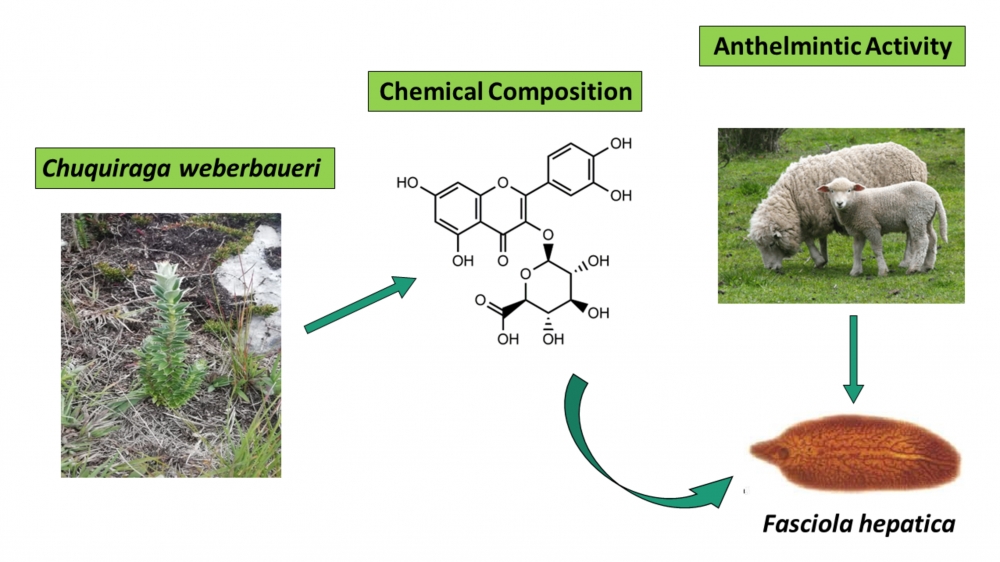JOURNAL 2751
Records of Natural Products
Year: 2023 Issue: 6 November-December
p.1031 - 1045
Viewed 2582 times.
-
Pedro Ortiz

-
Corpus Cerna

-
Abel García

-
Cristian Hobán

-
César A. Murga-Moreno

-
María Cabrera

-
Luz Angélica Suárez-Rebaza

-
José G. Gavidia-Valencia

-
Juan C. Rodríguez-Soto

-
Frank R. León-Vargas

-
Kosseth Bardales-Grandez

-
Cleto Jara-Herrera

-
Matsen García-Navarro

-
Carmen Cerdeña-del-Aguila

-
Ricardo Diego Duarte Galhardo de Albuquerque

-
Mayar Luis Ganoza-Yupanqui

GRAPHICAL ABSTRACT

ABSTRACT
Chuquiraga weberbaueri “amaro” (Asteraceae) is a plant species popularly used for the treatment of animal fasciolosis in Peru. However, biological and chemical studies of this species remain scarce. Hence, the objective of the present study was to evaluate the anthelmintic effect of the hydroethanolic and aqueous extracts of C. weberbaueri leaves on Fasciola hepatica, through a controlled and a therapeutic efficacy test in artificially infected sheep. In addition, the chemical composition of the extracts was evaluated using phytochemical screening and analysis by UHPLC-MS/MS. Among the evaluated extracts, the aqueous extract proved to be the most efficient and of low toxicity against F. hepatica, inhibiting about 70% of its oviposition, using a 100 mg/kg dose. The chemical study showed that the major constituents were phenolic derivatives, such as chlorogenic acid and ethyl caffeate, with the notable presence of flavonoids, saponins, and lactones. Therefore, it was possible to observe the antihelmintic effect of the C. weberbaueri on the F. hepatica, which suggests the use of this plant extract as a potential alternative in the sheep fasciolosis treatment.
KEYWORDS- Fasciola
- phytotherapy
- Chuquiraga
- bioactivity
- phenolics